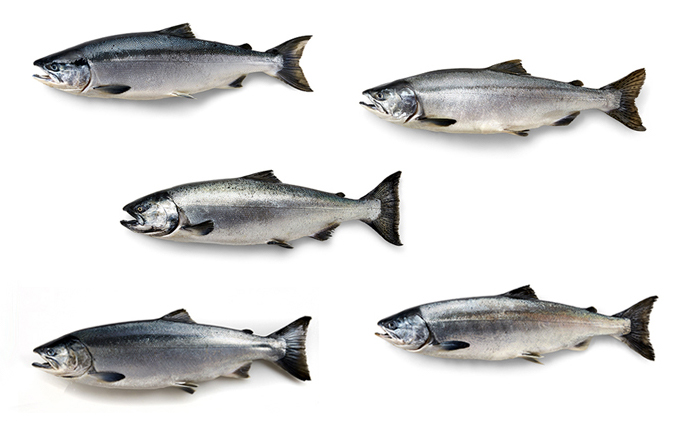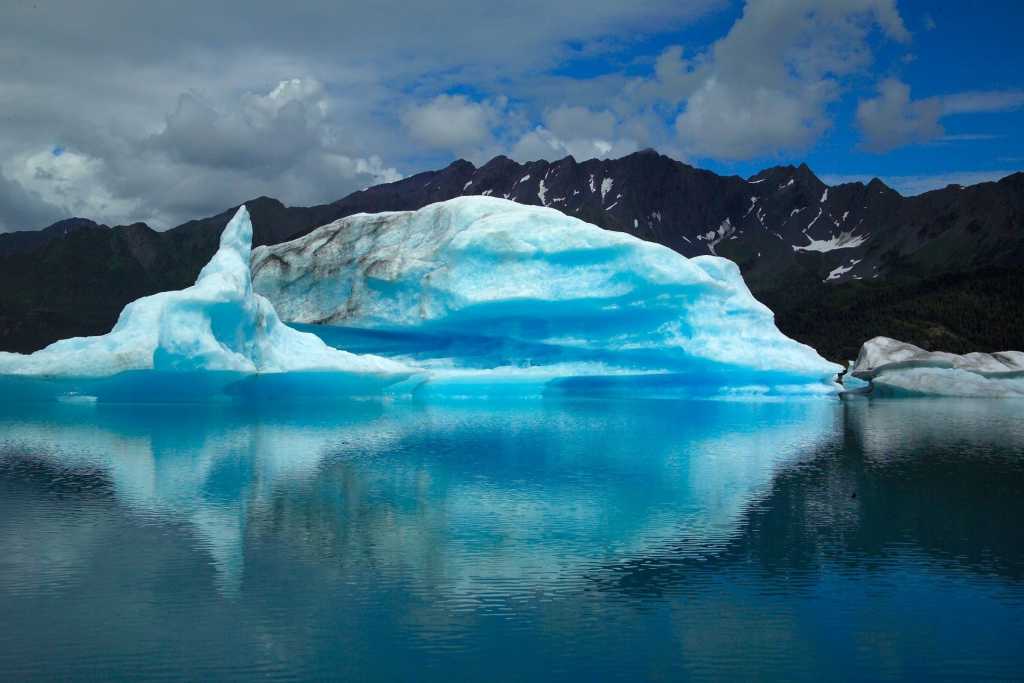Alaska may not be the most visited state in the United States, however, this northernmost state has claimed many titles for itself. Not only is it the largest state, but also one with the lowest population density of all states. Aside from being known as the “The Last Frontier”, earned by its great abundance of unsettled land, Alaska is seen as a land of promise with the official motto being “North to the Future.”
Known for being a great source of wild seafood, one of Alaska’s most important promises revolves around sustainable fishing. The state can be viewed as a role model for sustainable fisheries across the globe. Preservation of fish stocks and protection against overfishing are top priorities, with Alaska having some of the strictest fishing regulations worldwide. In fact, contrary to the general trend, the catch quantity in the state is deliberately reduced. With its remoteness and small population, Alaska is surrounded by some of the cleanest and most natural seas on the planet. It comes to no surprises that Alaska seafood is highly sought after near and far.

Types of Alaska Seafood
In the depths of the Bering Sea and North Pacific, countless fish thrive in their natural habitat. The seafood variety in Alaska is bountiful with five species of salmon, several varieties of whitefish, and numerous shellfish species.
Alaska Salmon |
| Pink Salmon |
| Sockeye Salmon |
| King Salmon |
| Coho Salmon |
| Keta Salmon |
Alaska Whitefish |
| Alaska Pollock |
| Cod |
| Halibut |
| Rockfish |
| Sablefish |
| Sole (Flounder) |
| Surimi |
Alaska Shellfish |
| Snow Crab |
| King Crab |
| Weathervane Scallop |
| Dungeness Crab |
Seafood expert or not, most know of or have heard of the beloved Alaskan Salmon. It would be a shame though, to overlook the culinary opportunities that lie amongst the variety of Alaskan whitefish.
Learn more about Alaska Pollock
Alaska pollock is one of the best known and most popular food fish around the world. In Alaska, the native fish is caught by trawlers on the high seas and processed fresh. Although pollock is one of the most abundant populations in the North Pacific and Bering Sea, it is still strictly controlled so that not too much fish is caught and the natural balance remains intact. In fact, The Alaska pollock fishery is the largest sustainable fishery in the United States.
In regards to cooking, the Alaska Pollock is a versatile delicacy and a nice protein power package. The high protein content of wild Alaska Pollock is easily digestible, and has all nine amino acids the body can’t produce itself — a complete protein of the highest quality. The white to pale pink meat is particularly tender and very mild.

Alaska pollock is extremely versatile! Depending on the season and your preference, you can enjoy it as fried fish, incorporate it into wraps or tacos, or even as a tasty salad topping.
It can easily be bought frozen and in stock, so you always have the delicious fish at hand. It is widely enjoyed in the form of fish sticks, gourmet filets or ready-made stir-fry dishes. The Alaska Pollack Fishburger is a great alternative to classic beef burgers as this delicious dish is prepared in no time in the oven.
Due to its versatility, no part of an Alaskan Pollock goes to waste. Alaska Pollock stomachs and milt are also enjoyed in China and other Asian countries. The oil is used for pharmaceuticals and collagen is made from the skins. Everything that is not consumed is made into high protein fishmeal to feed aquaculture species.
Discover the Wild Pacific Cod
Cod is hugely popular in most cuisines on the European continent. In England, the firm and slight sweet fish is commonly served as the traditional fish & chips. In Portugal, consumers enjoy bacalao, a salted dried cod, while in Germany, cod is mainly found in their beloved fish burgers. The rich white meat makes this fish perfect for many dishes and preparation options. Whether grilled, steamed, fried, or baked – there are endless ways to be creative around cod. Its firm, yet tender consistency ensures that it does not fall apart during preparation and retains a nice bite.
Cod is one of the most important pillars of the fishery in the north of the USA. For this very reason, the authorities take special care to ensure that the stocks are protected and fished sustainably.
Get to know Halibut, Rockfish, and Sablefish
With its firm, flaky texture and delicate flavor, wild Alaska halibut has earned its reputation as the world’s premium whitefish. Not to mention, Halibut is by far the largest food fish caught in Alaska’s waters, usually weighing around 20 kilograms. However, it has been noted that 50-year-old specimens can even weigh up to 220 kilograms.
With its fine aromatic flavor, the whitefish is a sought-after delicacy prized by professional and hobby chefs alike. Want to give this tasty fish a try? The Alaska Halibut Filet on Vegetable Linguine is simple, yet so full of flavor. Black olives and capers add a nice salty note that gets perfectly balanced out by the cooked vegetables and tender filet. Give it a try!
The Pacific Rockfish is a medium-firm fish that is widely distributed in Alaska. There are 37 species of rockfish that live in Alaska waters, however there are three species that represent over 90% of the harvest, with Pacific Ocean Perch being the most abundant. This tender, mild and meaty fish is versatile and lean, makes a perfect beer battered taco and is great for marinating. Perfect for poaching, steaming and sautéing.

Alaska sablefish, also commonly known as black cod, is prized for its rich melt-in-your-mouth flavor and succulent, velvety texture. Contrary to what the name may suggest, this rare delicacy belongs to the whitefish variety. The fish has a particularly high content of omega-3 fatty acids and is considered very healthy. The white meat has a full-bodied, slightly sweet taste. Especially in upscale gastronomy, the Alaska sablefish is considered a real insider tip.
Enjoy the pure taste of Wild Alaska Salmon
Five native species of wild salmon thrive through the depth of the Bering Sea and North Pacific. They vary in size, appearance and flesh color as much as they differ in flavor and texture and can be purchased year-round.

Connoisseurs rate the Sockeye Salmon as the noblest and finest of all, but the King Salmon is any hobby fisherman’s dream catch, as it is the biggest of them all. It is excellent for grilling and hot smoking and is often served in upscale restaurants.
Pink Salmon are the most common species and are characterized by their slightly pink meat, tender texture, and delicate flavor. They have a low to medium fat content and are most commonly found canned or smoked.
If you are looking for a delicious add on to your next brunch, try out the Baked Eggs Alaska with Wild Alaska Pink Salmon. The dish developed by Rachel Green is full of flavor and will leave you feeling satisfied and ready to start your day!

Protecting the future
Alaska is taking measures to protect the environment and wildlife. A long tradition of fishing along with a close relationship to the sea characterizes Alaskan fisheries today. The need to protect and preserve fish stocks and their habitats for future generations is exemplary.

Known for its pristine, unspoiled nature, Alaska has more than 40 marine protected areas, in which commercial fishing is prohibited. Alaskan authorities ensure that catches are regulated in such a way that the ecosystem is not endangered.
Consumers can contribute to the protection of fish stocks by paying attention to the designation of origin when buying fish.




